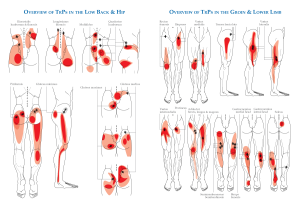5 Things To Know About Adult Scoliosis

Category: | Author:
Scoliosis is a condition that involves an unnatural sideways curvature of the spine, and it tends to be more common in children and teens who are experiencing rapid periods of bone growth. However, the condition can also develop in adults who did not experience scoliosis as a child. In fact, adult scoliosis is likely much more common than you think. In today’s blog, we share five things you should know about adult onset scoliosis.
What To Know About Adult Scoliosis
Scoliosis is defined as having a sideways curvature of the spine that is larger than 10 degrees, which may or may not be obvious to the naked eye. Here’s a look at five things we think you should know about adult scoliosis.
- It’s Not Always Symptomatic – Many adults who have scoliosis do not have any obvious symptoms like pain or a major loss in flexibility. However, this doesn’t mean that you can just ignore treatment. You’ll want to pursue some specific preventative treatment options to strengthen your spine and to keep the curvature disorder from worsening or becoming symptomatic.
- It’s Quite Common In Older Adults – More than half of Americans over the age of 60 would show signs of mild degenerative scoliosis on an imaging exam. You may not even need the level of treatment we spelled out above, but you do want to continue exercising and physically challenging your spine to help keep it strong and stable as you age.
- Surgery May Be Necessary, But It’s A Last Resort – Oftentimes a spine specialist will do everything in their power to avoid moving forward with scoliosis surgery if at all possible. Surgery isn’t going to return your spine to perfect alignment, and many patients experience mild or moderate symptom improvement with the help of a conservative treatment plan that includes exercise, physical therapy, weight loss and posture improvement.
- Early Treatment Matters – Like a number of conditions, the sooner you seek professional assistance, the more likely it is that you will experience positive results. If you wait until your curvature disorder has become severe, it’s less likely that conservative care will be able to help you find relief, and even surgery may not be able to fully correct the problem. If you begin to suspect that you’re developing a spinal curvature disorder, or your spine is starting to hurt or become less mobile, reach out to your primary care provider or a spine specialist.
- It Has A Number Of Underlying Causes – Adult scoliosis can be brought on by many different factors, but some of the most common underlying causes include: degeneration of supportive vertebral ligaments, spinal disc degeneration, asymmetric loading of the spinal column, or unmanaged arthritis or osteoporosis.
You can’t completely prevent natural degeneration or the onset of arthritis, but you can significantly reduce your risk of adult scoliosis by regularly exercising, maintaining an optimal weight and treating small back issues as they develop. Dr. Sincropi and his team are here to help you in any way possible if you are dealing with new or chronic back pain, so don’t put off treatment any longer. For questions or appointment information, give the team at The Midwest Spine & Brain Institute a call today at (651) 430-3800.
Related




